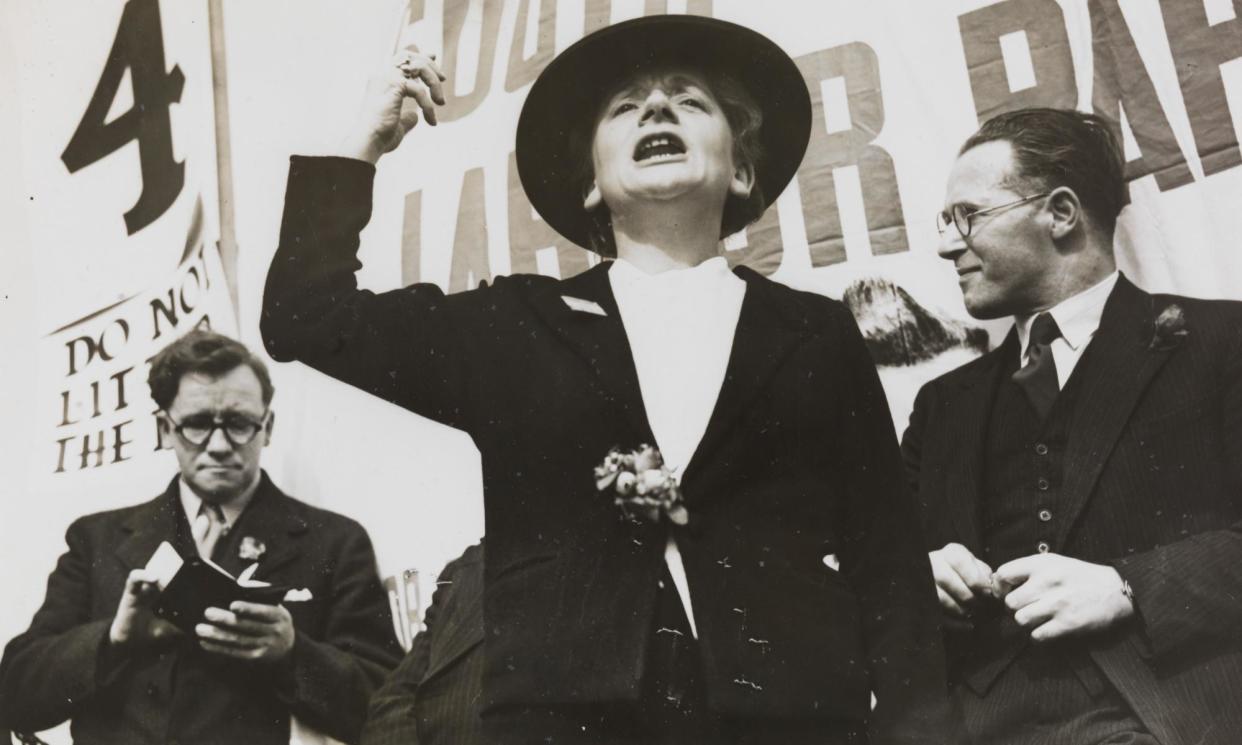The women who came before: Rachel Reeves’s three Labour leading lights

In just over two weeks Rachel Reeves could become Britain’s first female chancellor of the exchequer.
Reeves has named three women on whose shoulders she would stand if she got the post. These are their stories.
Ellen Wilkinson
Ellen Wilkinson’s flame-coloured hair, diminutive stature and energetic brand of politics earned her the nickname of the “Fiery Particle”.
The daughter of a Manchester cotton worker, Wilkinson began her career as a women’s suffrage organiser in 1913 before becoming a trade union official and, later, a Labour MP and minister.
A 4ft 10in (1.47m) dynamo, Wilkinson was known as a woman on a mission – so much so that she is said to have frequently fallen over while sprinting through the corridors of parliament. Being accident-prone did not stop her. After a night-time collision with a lorry during a blackout, she reportedly turned up to work the next day with a fractured skull.
Even as a 16-year-old she made an impression, giving a speech about women’s emancipation to a crowd of jeering men who hurled stones at her. She gathered up the stones into a neat pile and turned to the men, saying: “Only women, lunatics and criminals can’t vote. Yet you are the lunatics and criminals.”
As the newly elected MP for Jarrow, Wilkinson led the Jarrow march in 1936 when residents of the Tyneside town walked 280 miles to Westminster in protest against rampant unemployment and poverty.
While her early life was notable for its radicalism – she was a founder member of the British Communist party in 1920 – “Red Ellen” became more pragmatic in later years.
She was made education secretary in the aftermath of the second world war and was the only woman in Clement Attlee’s 1945 government. Her legacy included providing free milk and meals to deprived children, creating 400,000 classroom spaces, and providing grants for 37,000 military veterans to train as teachers.
She refused to accept less than equal treatment. When a police officer once attempted to prevent her entering the House of Commons’ smoking room, she pushed past and opened the door saying: “I am not a lady – I am a member of parliament.”
Barbara Castle
When the skilled seamstresses at Ford’s car factory in Dagenham downed needles in 1968, it was Barbara Castle who ensured an end to the strike and a better future for working women.
As the secretary of state for employment and productivity in Harold Wilson’s Labour government, Castle intervened on behalf of the sewing machinists, immediately increasing their rate of pay. The intervention led to the introduction of the Equal Pay Act 1970, designed to ensure that women doing the same work as men should be paid the same wage.
Serving as the MP for Blackburn for 35 years from 1945, Castle is seen as one of the most influential female politicians of the 20th century.
Serving in a wide range of cabinet posts, she even spent two years as the minister for transport despite not being able to drive, introducing key safety legislation on seatbelts, speed limits, and the breathalyser to detect drink-driving. As minister for overseas development in the 1960s, she pushed for interest-free aid loans to decolonised countries.
When Castle returned to the frontbenches as the secretary of state for health and social services in 1974, she continued to fight for women, introducing the Child Benefit Act that ensured payouts for all children – and that they would be picked up directly by mothers, instead of being added to men’s pay.
Harriet Harman
Few MPs have done more for women in Westminster than Harriet Harman. As Britain’s longest-serving female MP, Harman was mother of the house when she stood down from her south London seat last month after 42 years in post.
When Harman started out as the MP for Camberwell and Peckham in 1982, just 3% of MPs were women and they tended to be older and without caring responsibilities. In contrast, Harman was 32 and seven months pregnant.
Harman is credited with initiatives including the introduction of all-women shortlists, which helped raise the proportion of female MPs within the Labour party to 45%. She consistently campaigned for parliament to become a better place for parents to work and was instrumental in putting baby leave for MPs on the political agenda.
Under Tony Blair’s government in 1997, she was given the newly created post of minister for women alongside her brief as secretary of state for social security. She is credited with strengthening domestic violence laws and was the orchestrator of the 2010 Equality Act, which combatted discrimination and gave public bodies a statutory duty to consider the rights of those with protected characteristics.
Other parliamentary posts she held included solicitor general, leader of the House of Commons, and deputy leader of the Labour party.
In her pre-Westminster career, Harman had also furthered equality causes as a campaigning lawyer. As the legal officer for Liberty (then the National Council for Civil Liberties), she took the first cases for women under the new Equal Pay and Sex Discrimination Acts.


